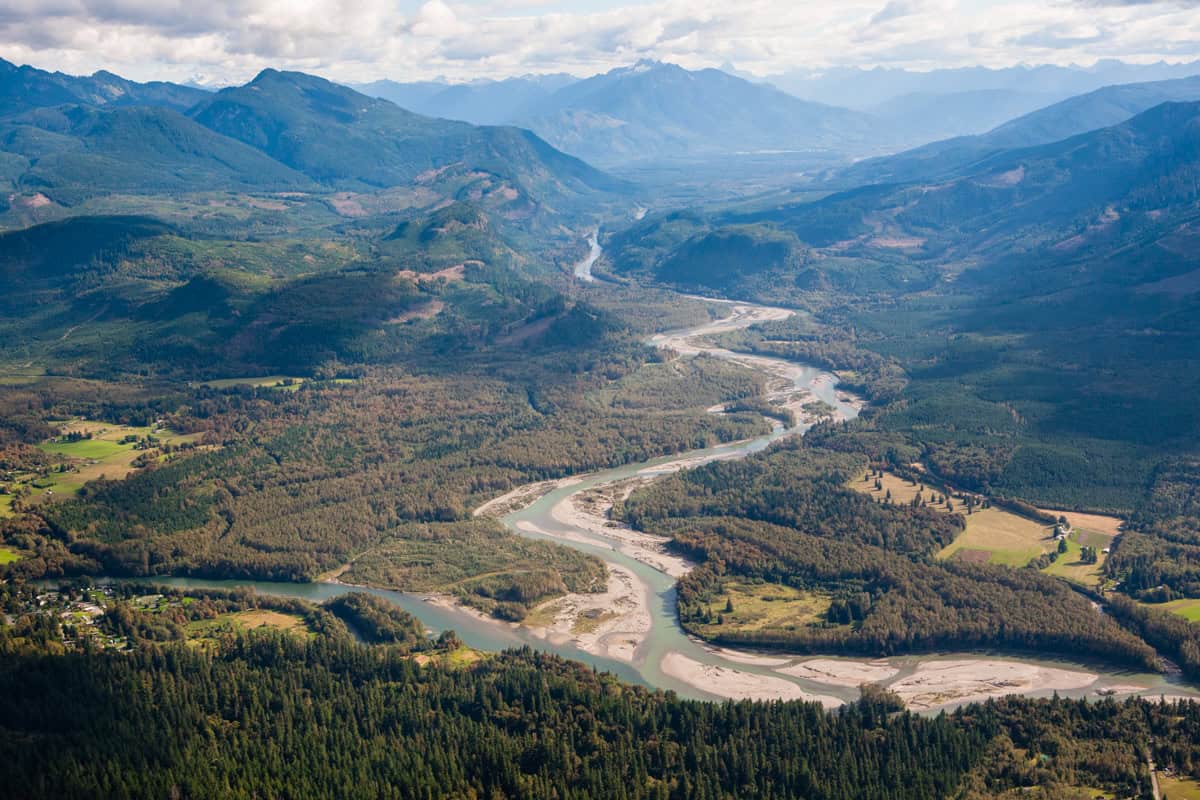
A River of Stories: Storytelling on the Skagit
The Skagit River sustains us humans in many ways, from providing drinking water to irrigating crops to hosting fisheries. Of course, the basin is also home to a profound richness of wildlife including bears, salmon, bald eagles, otters, trout, voles, elk, swans and the Pacific giant salamander. The river is a popular destination for recreation – camping, kayaking, rafting, fly-fishing, skinny-dipping – as well as spiritual sustenance. Paying a visit to the Skagit in any season can be a ritual, a wellspring of peace, a space for reflection and renewal.
The Skagit River is also an fount of creativity, and one of my favorite lenses to view the river through is the storytelling heritage its flowing waters have inspired.
Rivers have enkindled stories throughout history, from underworld rivers in Greek mythology to sources of purification in Hindu traditions to world creation in Norse tales. The Skagit is no different. Its waters, fish, plants and animals have nourished the spiritual and mythological life of the region’s original people, including the Sauk-Suiattle Indian Tribe, the Upper Skagit Indian Tribe, the Swinomish Indian Tribal Community, the Samish Tribe and the Nlaka’pamux Nation. These liminal dimensions are often expressed through stories.
In surveys by anthropologists, the Upper Skagit people have many stories involving three particular figures: mink, raven and coyote. Each were “mythological trickster transformers, supernaturals in the form of these animals but as large as humans, capable of speech, living in houses, and to a certain extent behaving like humans, according to Allan Smith in his study “Ethnography of The North Cascades.”
“Myths were told in evenings for the children, who were expected to sit just so and be attentive,” he continues. “To increase interest and give the tale a vitality of its own, a good raconteur changed his voice for different characters and added details of his own choosing.”
 The excellent collection of stories from Puget Sound’s indigenous cultures Haboo, translated and edited by Upper Skagit native speaker Vi Hilbert, shares folklore from tribes dwelling around the Skagit River. Tales like “The Legend of the Humpy Salmon,” “Legend of the Season,” “Basket Ogress” and “Wolf Brothers Kill Elk and Beaver” are full of hyper-local details, and a dazzling, sometimes bewildering mix of voices from animals, ancestors, spirits and the elements.
The excellent collection of stories from Puget Sound’s indigenous cultures Haboo, translated and edited by Upper Skagit native speaker Vi Hilbert, shares folklore from tribes dwelling around the Skagit River. Tales like “The Legend of the Humpy Salmon,” “Legend of the Season,” “Basket Ogress” and “Wolf Brothers Kill Elk and Beaver” are full of hyper-local details, and a dazzling, sometimes bewildering mix of voices from animals, ancestors, spirits and the elements.
“Why the Skagit River Flows One Way” **
Long ago, in the time before the great changes, the river ran in both directions. The people were happy. The water carried them wherever they wanted to go. In those times all the people and animals were together. They spoke the same language—they had the same spirits. The wise ones—coyote, otter, and raven, advised the Old Creator on how things should work. They had many arguments, but worked out most other things.
But Raven, he didn’t stop arguing. He complained and complained about the river – he thought it should run one way. One day Old Creator had enough. He decided that some people, especially Raven, were asking too many questions. He was tired of listening to them. He decided to make some changes.
One change was that people and animals would be different and speak in different tongues. Another change was that each person would have to make themselves very clean by bathing in the river and going without eating, so spirits could enter them and give them power and wisdom to know how to live.
But, things would not be easy—the river would always run one way. People would have to learn to find their way through the currents. And Raven, he was changed to the way he is now. He wears feathers, sits in the tops of trees, and complains all day—and no one listens to him.
Many centuries later, closer to our present era, the Skagit River inspired two distinct and important American literary movements: the Beat Generation and the Northwestern counterculture of the late 1960-70s.
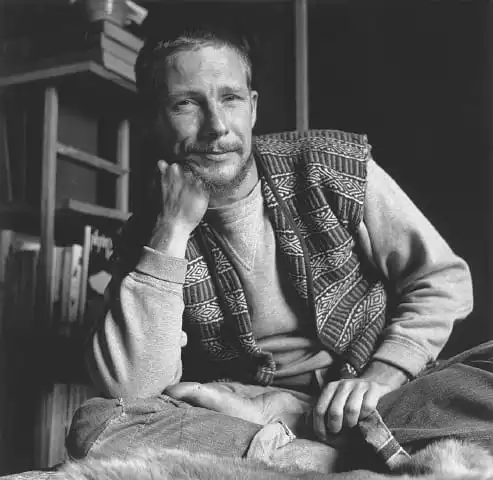
Washington-born poet and essayist Gary Snyder worked for the US Forest Service as a fire lookout in the North Cascades, first on Crater Mountain in 1952, then Sourdough Mountain in 1953. His Reed College roommate and fellow poet Phillip Whalen joined him, manning lookouts on Sauk Mountain and Desolation Peak.
These experiences on remote mountaintops near the headwaters of the river were fertile periods for self-reflection, connecting with nature, writing and exploring Zen Buddhist philosophy and meditation.
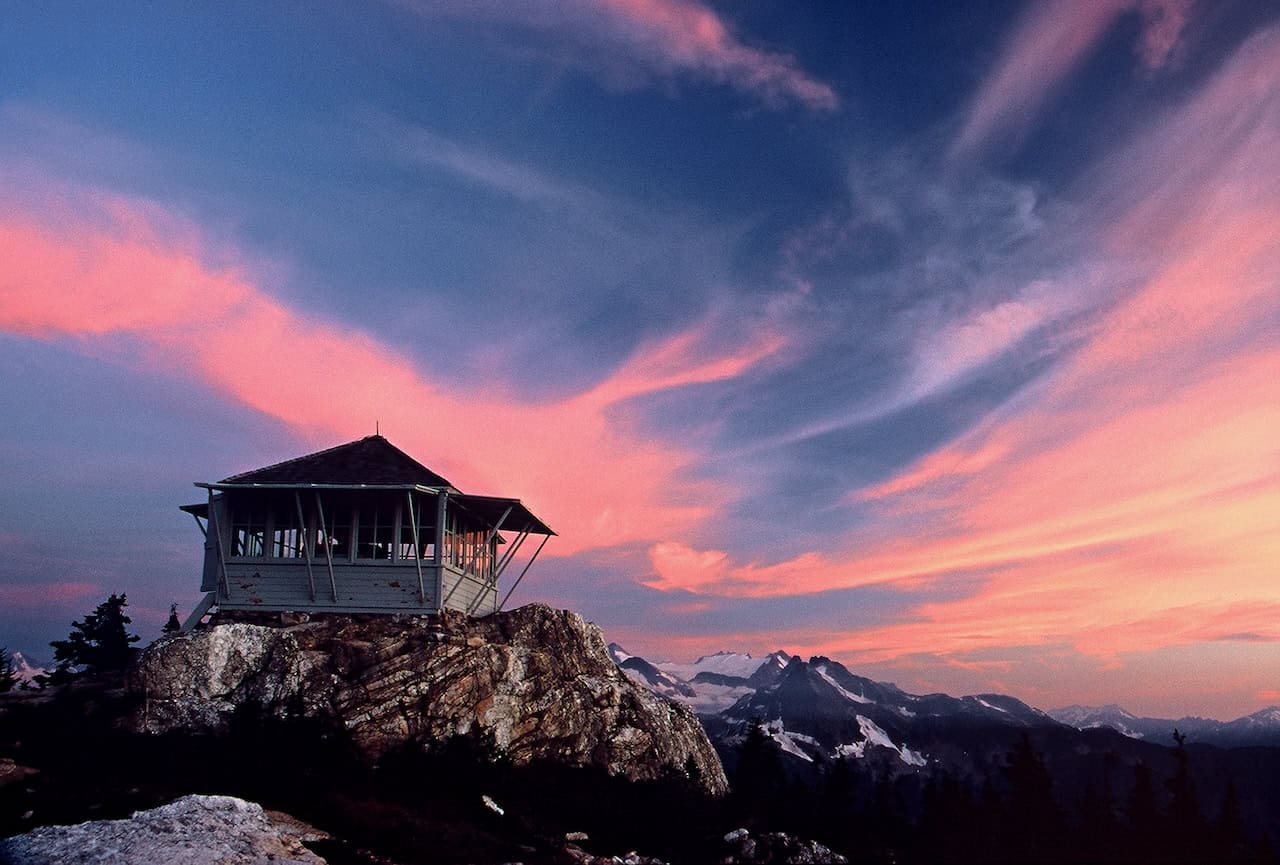
Looking down from his Cascadian perch towards the river, impounded behind Ross and Diablo dams, Whalen wrote:
Morning fog in the southern gorge
Snyder’s lookout journals were published in Earth House Hold, and poems inspired by his Skagit sojourns enliven his books The Back Country and RipRap. “Mid-August at Sourdough Mountain Lookout” opens with these details from wildfire season:
Down valley a smoke haze
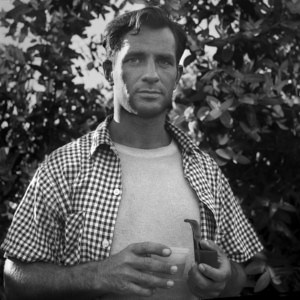
Snyder—who later won the Pulitzer Prize for Poetry—convinced his writer friend Jack Kerouac to follow in his footsteps. In the summer of 1956, the East Coast urbanite spent 63 days as a lookout on Desolation facing down imposing Hozomeen Mountain, where the Skagit River flows over the border from Canada. The intense isolation and immersion in wilderness was immortalized in his popular experimental-prose novels Desolation Angels and The Dharma Bums.
In an essay from his collection Lonesome Traveler, Kerouac describes the journey up the Skagit:
At Marblemount the river is a swift torrent, the work of quiet mountains.—Fallen logs beside the water provide good seats to enjoy a river wonderland, leaves jiggling in the good clean northwest wind seem to rejoice, the topmost trees on nearby timbered peaks swept and dimmed by low-flying clouds seem contented.—The clouds assume the faces of hermits or of nuns, or sometimes look like sad dog acts hurrying off into the wings over the horizon.—Snags struggle and gurgle in the heaving bilk of the river.—Logs rush by at twenty miles an hour. The air smells of pine and sawdust and bark and mud and twigs—birds flash over the water looking for secret fish.
Several decades later at the other end of the river, another counter-cultural movement arose as a group of writers, scholars and artists collected like a logjam in the Skagit’s northern estuary. Occupying a motley assortment of abandoned cabins and gill-netter shacks, the group formed a commune of sorts they named Fishtown. Fixing up and inhabiting the rustic structures, they practiced meditation, calligraphy, sculpture, music-making, painting and voluntary poverty as the Summer of Love of the late 1960s crested and spilled over in to the 1970s.
Amongst this eccentric crew—occasionally known as The Asparagus Moonlight Group—was Robert Sund. Born in Olympia, Sund spent summers logging in the Olympics, working wheat harvests in Walla Walla and fishing in Alaska. At the University of Washington, he studied creative writing under the mentorship of Theodore Roethke, and soon dedicated himself to the simple life of a poet and spiritual seeker.
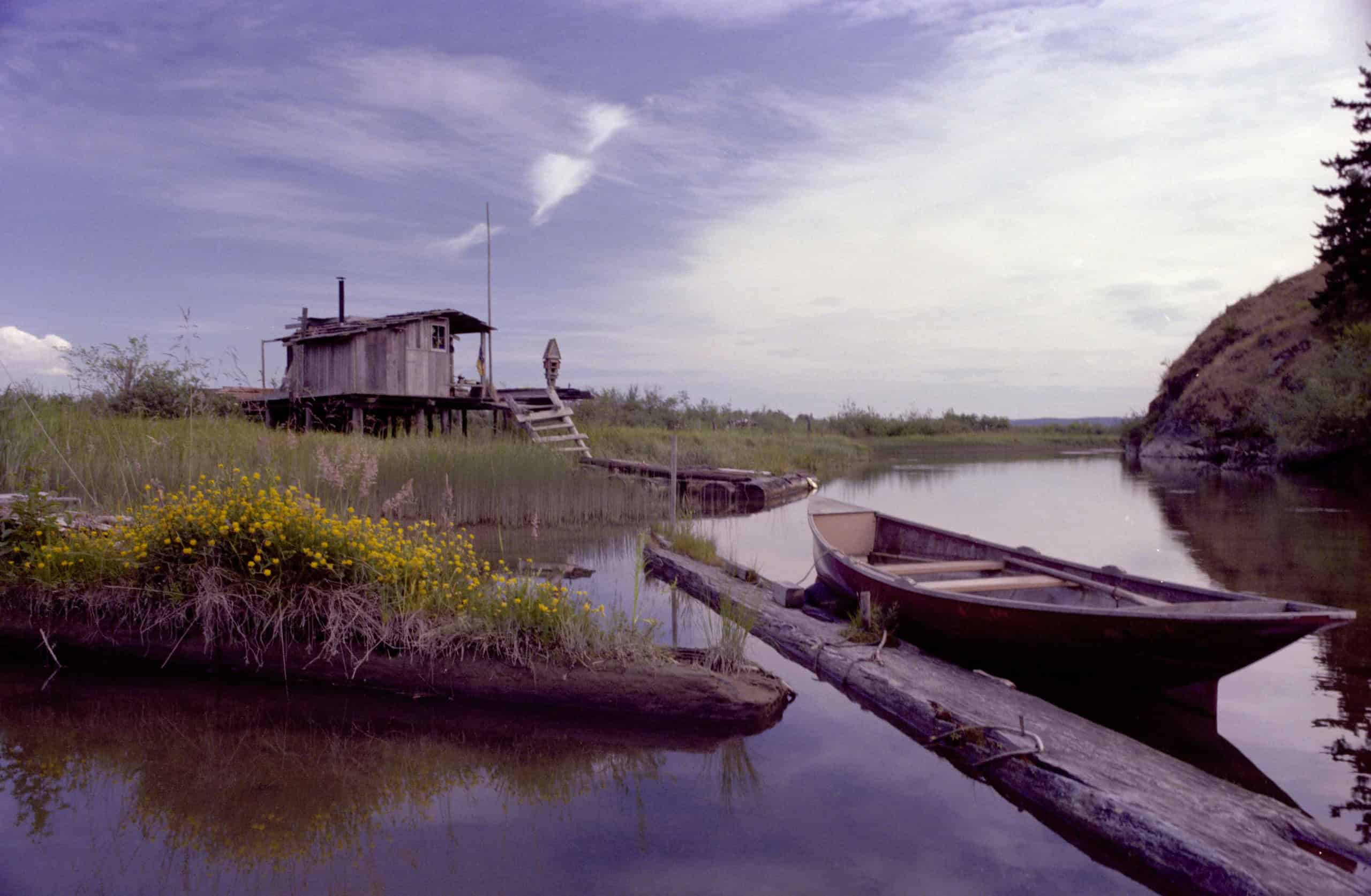
In the summer of 1973, Sund built a hermitage from salvaged lumber on old pilings in the vicinity of Fishtown. With no running water or electricity, and accessible only by boat, he dwelled there off and on for the next dozen or so years, writing, playing his autoharp, brewing tea, communing with nature and observing the cycles of the seasons—the Skagit’s own modern-day Thoreau.
“Out on the river you know you are in the midst of a great creation,” Sund wrote. “You see the old work and the new work side by side; the ancient migration routes of all the birds, and the slow building of silt and soil in the estuary …”

Sund produced a flood of poems during his time on the Skagit, published in small-batch chapbooks including Why I Am Singing for the Dancer and Shack Medicine. Most of his poetic output was collected and republished posthumously in Poems from Ish River Country, as were his river journals.
Notes from Disappearing Lake is comprised of short, pithy entries from more than “75 small, thin Chinese notebooks of near-weightless paper” dating from 1973 to 1987, according to his editor and friend Tim McNulty. (McNulty is a Northwest poet who also spent summers as a fire lookout atop Sourdough—coincidentally during the 50th anniversary of Snyder’s stint in 2003, “a lovely synchronicity,” as he describes it. His mountaintop poems were published in the chapbook Through High Still Air and the collection Ascendance.)
Notes from Disappearing Lake offers observational gems like “Arriving Home Late at Night” from July 2, 1978
Rowing upriver in the dark
I startle a beaver.
Chopping kindling at midnight
I wake the frogs.
I light a fire
& make tea.
At last, falling asleep,
I leave the night
to the owls calling
in the Bald Island woods.
Around the same time, just a few paddle-strokes downstream from Fishtown, writer and literary prankster Tom Robbins settled in to the sleepy fishing and farming village of La Conner. From his perch on the Swinomish Channel, he conjured up cult classic novels including Even Cowgirls Get the Blues, Skinny Legs and All and Jitterbug Perfume.
“October lies on the Skagit like a wet rag on a salad,” Robbins observed in Another Roadside Attraction. “Trapped beneath low clouds, the valley is damp and green and full of sad memories. The people of the valley have far less to be unhappy about than many who live elsewhere in America, but, still, an aboriginal sadness clings like the dew to their region; their land has a blurry beauty (as if the Creator started to erase it but had second thoughts), it has dignity, fertility and hints of inner meaning—but nothing can seem to make it laugh.”
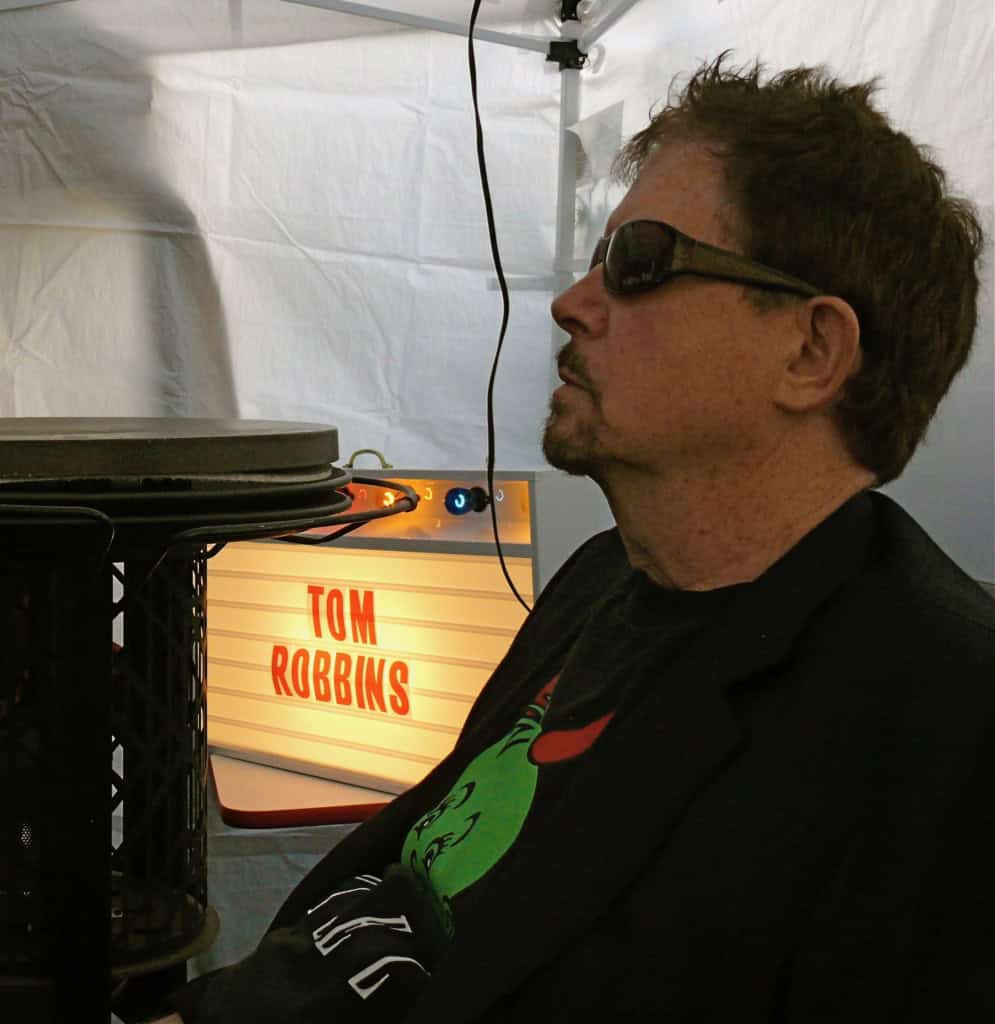
Experimenting with nonlinear plot lines, collage techniques, sentient inanimate objects and an attempt to not recreate the psychedelic Sixties on page but instead “to mirror in style as well as content their mood, their palette, their extremes, their vibrations, their profundity, their silliness and whimsy,” as he once described it, Robbins has sold millions of books in multiple languages around the world.
What is it about the juncture of the glacier-fed waters of the Skagit River intermingling with the salty Sound that inspires prose and poesy as potent but diverse as Sund and Robbins?
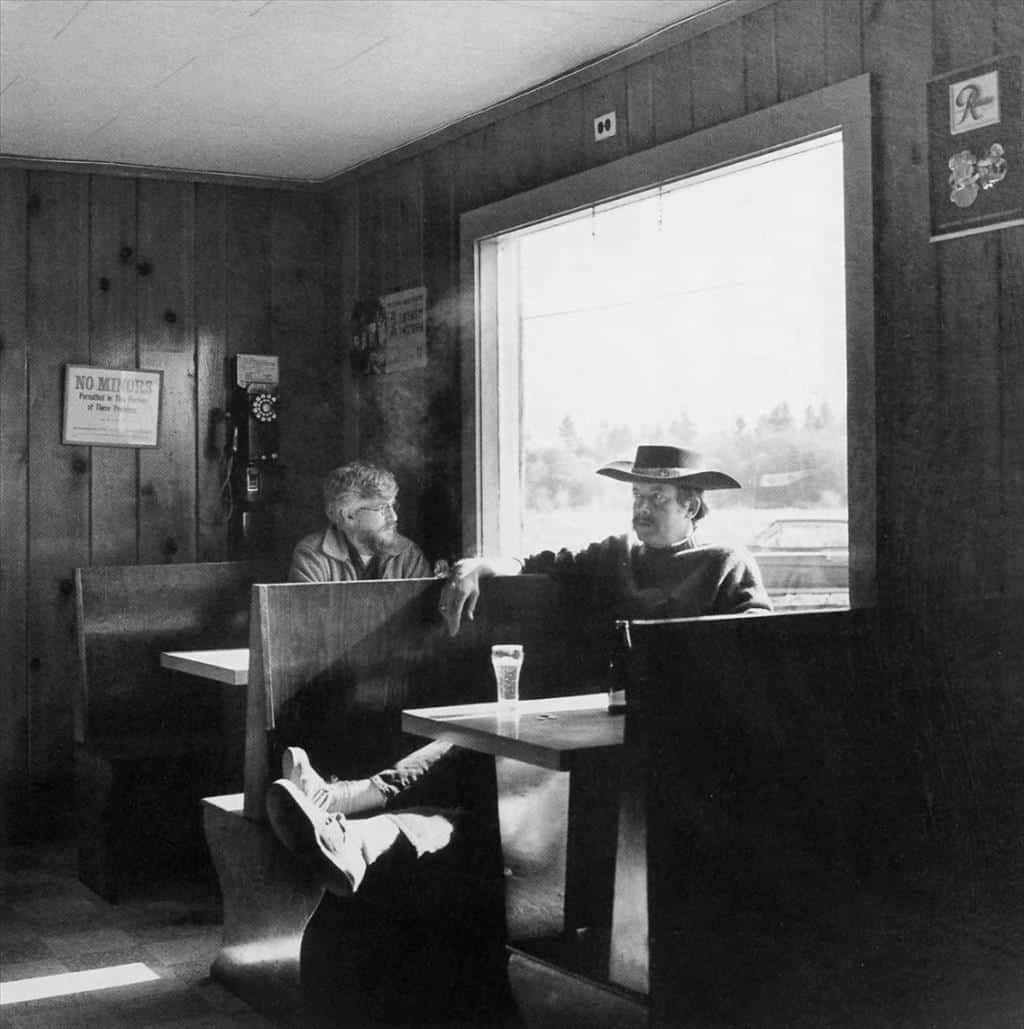
“A river mouth, in and of itself, exerts an influence on human consciousness that becomes manifest in music, literature, and art,” opines Robbins in his essay “The Tao of Mud.” “T.S. Eliot celebrated rivers as great brown gods. Could it be that where such a god French-kisses the vast maternal sea … forces are released that spur a particular brand of intellectual activity?”
Every river is a unique expression, an interconnected braid of physical place and metaphysical meaning. Rivers show us not only where we are, but also reflect back who we are. From the headwaters in Canada to its union 130-some miles later with the Salish Sea, the Skagit River has inspired, influenced and informed centuries of stories and storytellers. We are lucky for this local legacy.
Long may the creative waters flow!
Originally published in Adventures Northwest, Spring 2024.
** “Why the Skagit River Flows One Way” is a story passed on to Jim Harris by an Upper Skagit friend and published in Voices Along the Skagit, courtesy of North Cascades Institute.

